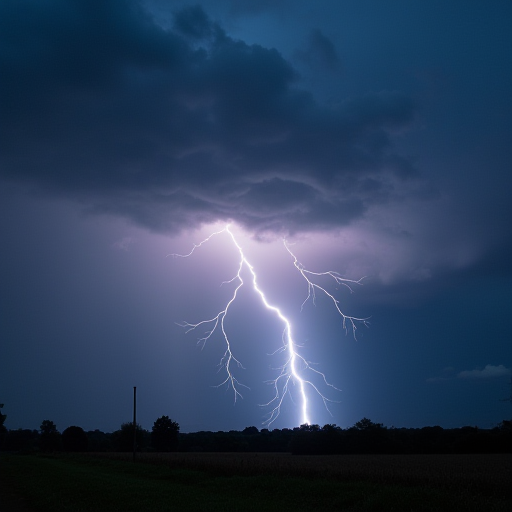
Why Do Lightning Strikes Happen?
Lightning is one of nature's most spectacular phenomena, captivating and terrifying humans for centuries. This powerful electrical discharge can illuminate the sky, produce deafening thunder, and, at times, wreak havoc on the ground. But what exactly causes lightning strikes to happen? In this article, we delve into the science behind lightning, exploring its formation, conditions, and effects.
The Basics of Lightning
Lightning is essentially a gigantic spark of electricity in the atmosphere, occurring when there is an imbalance between storm clouds and the ground, or within the clouds themselves. This electrical discharge is the result of a complex series of processes that begin with the formation of a storm cloud.
Formation of a Storm Cloud
-
Rising Warm Air: The initial step in the formation of a storm cloud involves warm, moist air rising into the atmosphere. As it rises, it cools and condenses to form cumulonimbus clouds, the towering giants capable of producing lightning.
-
Separation of Charges: Within these clouds, the processes of convection and turbulence cause the separation of electrical charges. Positively charged ice crystals gather at the top of the cloud, while negatively charged water droplets and hailstones accumulate at the bottom.
-
Charge Imbalance: This separation creates a significant electrical potential difference between the top and bottom of the cloud. Additionally, the ground below the storm cloud becomes positively charged as a response to the cloud's negative charge.
The Lightning Process
-
Step Leader Formation: To neutralize the charge imbalance, a channel of ionized air, known as a "step leader," begins to form, extending from the cloud toward the ground. This channel is not visible to the naked eye.
-
Upward Streamers: As the step leader approaches the ground, objects on the surface, such as trees, buildings, and even people, send out positive streamers to meet the approaching leader.
-
Return Stroke: When the step leader and an upward streamer connect, a powerful electrical discharge occurs. This is the visible bolt of lightning, known as the "return stroke," which moves at a speed of up to 220,000 miles per hour.
-
Thunder: The intense heat from the lightning bolt causes the surrounding air to expand rapidly, creating a shock wave that we hear as thunder.
Conditions Favoring Lightning
Lightning is most likely to occur in conditions where there is substantial atmospheric instability and moisture. This is why lightning is most common in the following scenarios:
- Thunderstorms: The most frequent source of lightning, thunderstorms provide the perfect conditions for charge separation and the subsequent discharge.
- Volcanic Eruptions: The ash and particles ejected during a volcanic eruption can create a similar charge separation, leading to volcanic lightning.
- Hurricanes: While less common, hurricanes can produce lightning, particularly in their outer rainbands.
- Wildfires: The intense heat and rising smoke from wildfires can also generate lightning.
Effects and Hazards of Lightning
Lightning strikes can have a range of effects, from the benign to the catastrophic. Here are some of the potential impacts:
- Wildfires: Lightning is a common natural cause of wildfires, especially in dry regions.
- Power Outages: Lightning can strike power lines and transformers, leading to widespread outages.
- Structural Damage: Direct strikes can cause significant damage to buildings and infrastructure.
- Human and Animal Injury: Although rare, lightning strikes can be fatal to humans and animals. It is crucial to seek shelter during a thunderstorm to mitigate this risk.
Conclusion
Lightning is a fascinating natural phenomenon resulting from complex atmospheric processes. Understanding why lightning strikes happen not only satisfies our curiosity but also helps us develop better safety measures to protect ourselves and our infrastructure. As research continues, scientists hope to unravel more of lightning's mysteries, paving the way for enhanced prediction and prevention strategies.
